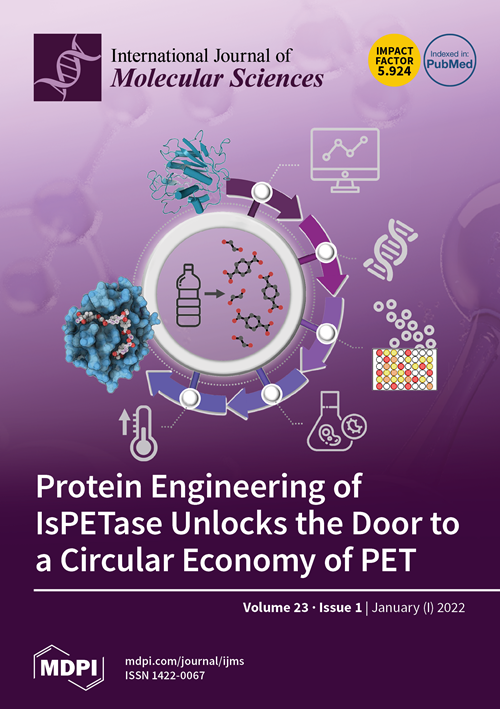直肠内注射阿地米罗加透明质酸凝胶可改善小鼠的实验性结肠炎,并抑制溃疡性结肠炎患者体内培养活组织的促炎反应
IF 4.9
2区 生物学
Q1 BIOCHEMISTRY & MOLECULAR BIOLOGY
引用次数: 0
摘要
对于临床医生来说,改善溃疡性结肠炎(UC)患者的临床疗效并延缓疾病复发至关重要。除了利用生物药物的传统和新型药物疗法外,能够改善溃疡性结肠炎和促进缓解期的医疗设备的开发也不容忽视。基于药物的疗法需要时间来进行个性化治疗,并评估其收益/风险比。然而,由于全球确诊的 UC 病例不断增加,因此有必要探索新的策略来提高临床疗效。通过将医疗设备与药物治疗相结合,临床医生可以为多发性硬化症患者提供额外的支持,从而改善他们的病情并减缓症状的复发。阿德米醇的化学名称为壬二酸衍生物和棕榈酰乙醇酰胺(PEA)类似物,是一种有效的抗炎和抗氧化化合物。在这项研究中,我们旨在评估通过 DNBS 灌肠诱导的小鼠结肠炎模型中,直肠内给药 2% adelmidrol(Ade)和 0.1% 透明质酸(HA)凝胶配方在急性期和缓解期的效果。我们还研究了它在体外暴露于细胞混合物挑战时,对从处于缓解期的 UC 患者随访中分离出来的培养人结肠活检组织的活性。与此同时,Ade/HA 凝胶在泌尿科病人(如 Vessilen)静脉内给药时能有效缓解慢性炎症性膀胱炎的疼痛,其直肠内给药在改善结肠炎病程方面也显示出显著的潜力。这种治疗方法在体内研究和人体标本中都显示出组织学损伤评分的降低以及 ZO-1 和闭塞素紧密连接表达的增加。Ade/HA 凝胶对内源性 PEA 水平的作用是独立的,而且不会被全身吸收,其有效性依赖于局部抗氧化机制,这种机制在发炎的肠道中发挥着 "屏障效应 "的作用。在这项初步研究结果的基础上,我们相信 Ade/HA 凝胶医疗设备有望成为支持传统抗尿路感染疗法的重要辅助工具。本文章由计算机程序翻译,如有差异,请以英文原文为准。
Intrarectal Administration of Adelmidrol plus Hyaluronic Acid Gel Ameliorates Experimental Colitis in Mice and Inhibits Pro-Inflammatory Response in Ex Vivo Cultured Biopsies Derived from Ulcerative Colitis-Affected Patients
Improving clinical outcomes and delaying disease recrudescence in Ulcerative Colitis (UC) patients is crucial for clinicians. In addition to traditional and new pharmacological therapies that utilize biological drugs, the development of medical devices that can ameliorate UC and facilitate the remission phase should not be overlooked. Drug-based therapy requires time to be personalized and to evaluate the benefit/risk ratio. However, the increasing number of diagnosed UC cases worldwide necessitates the exploration of new strategies to enhance clinical outcomes. By incorporating medical devices alongside pharmacological treatments, clinicians can provide additional support to UC patients, potentially improving their condition and slowing down the recurrence of symptoms. Chemically identified as an azelaic acid derivative and palmitoylethanolamide (PEA) analog, adelmidrol is a potent anti-inflammatory and antioxidant compound. In this study, we aimed to evaluate the effect of an intrarectal administration of 2% adelmidrol (Ade) and 0.1% hyaluronic acid (HA) gel formulation in both the acute and resolution phase of a mouse model of colitis induced via DNBS enema. We also investigated its activity in cultured human colon biopsies isolated from UC patients in the remission phase at follow-up when exposed in vitro to a cytomix challenge. Simultaneously, with its capacity to effectively alleviate chronic painful inflammatory cystitis when administered intravesically to urological patients such as Vessilen, the intrarectal administration of Ade/HA gel has shown remarkable potential in improving the course of colitis. This treatment approach has demonstrated a reduction in the histological damage score and an increase in the expression of ZO-1 and occludin tight junctions in both in vivo studies and human specimens. By acting independently on endogenous PEA levels and without any noticeable systemic absorption, the effectiveness of Ade/HA gel is reliant on a local antioxidant mechanism that functions as a “barrier effect” in the inflamed gut. Building on the findings of this preliminary study, we are confident that the Ade/HA gel medical device holds promise as a valuable adjunct in supporting traditional anti-UC therapies.
求助全文
通过发布文献求助,成功后即可免费获取论文全文。
去求助
来源期刊

International Journal of Molecular Sciences
Chemistry-Organic Chemistry
CiteScore
8.10
自引率
10.70%
发文量
13472
审稿时长
17.49 days
期刊介绍:
The International Journal of Molecular Sciences (ISSN 1422-0067) provides an advanced forum for chemistry, molecular physics (chemical physics and physical chemistry) and molecular biology. It publishes research articles, reviews, communications and short notes. Our aim is to encourage scientists to publish their theoretical and experimental results in as much detail as possible. Therefore, there is no restriction on the length of the papers or the number of electronics supplementary files. For articles with computational results, the full experimental details must be provided so that the results can be reproduced. Electronic files regarding the full details of the calculation and experimental procedure, if unable to be published in a normal way, can be deposited as supplementary material (including animated pictures, videos, interactive Excel sheets, software executables and others).
 求助内容:
求助内容: 应助结果提醒方式:
应助结果提醒方式:


